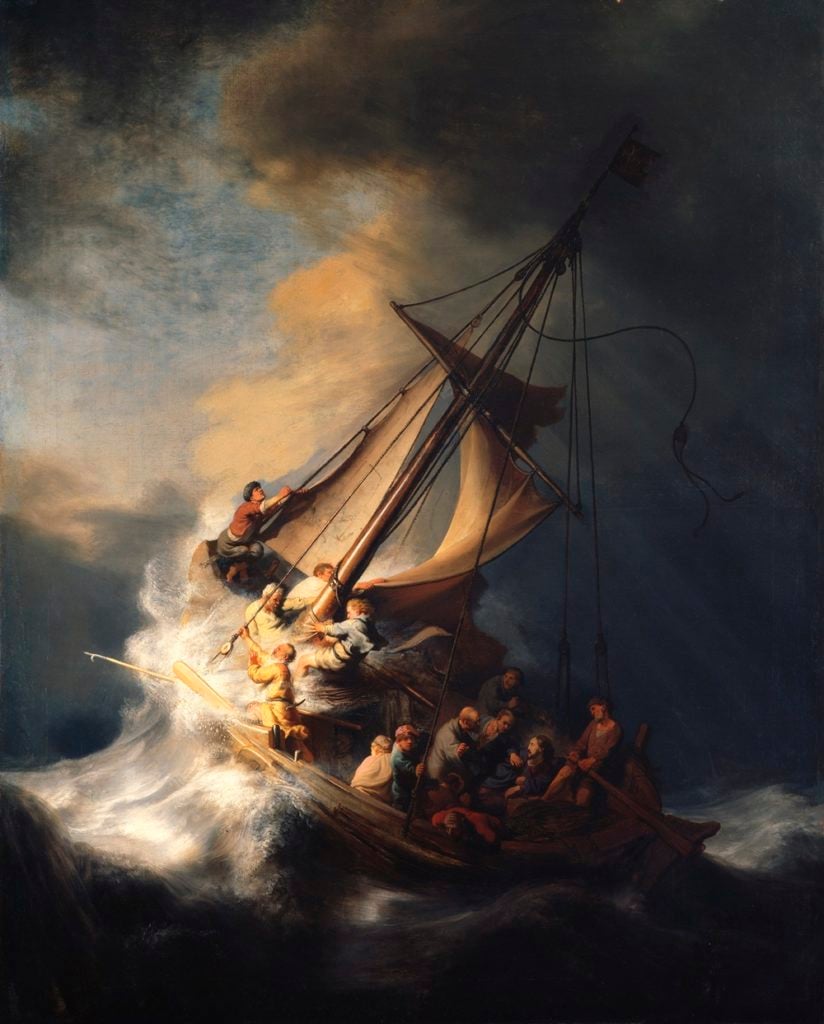Crime
Did the Truth About the Fabled Isabella Stewart Gardner Museum Heist Just Die Forever With Crime Boss Whitey Bulger?
Tales of Bulger's involvement in the heist abound, but the museum says he had nothing to do with it.

Tales of Bulger's involvement in the heist abound, but the museum says he had nothing to do with it.

Eileen Kinsella

He was a notorious murderer and organized crime boss in Boston. Was he also responsible for the largest art heist in museum history?
James “Whitey” Bulger was found beaten to death in a West Virginia prison on Tuesday. He was 89 years old. He was attacked by inmates on Monday, the day after he was transferred to a West Virginia prison from one in Florida, according to the New York Times. An organized crime official is believed to have been responsible for the killing. Bulger was serving two life sentences for 11 murders, among other crimes.
His name has also frequently come up in connection with the theft of an estimated $500 million of art from Boston’s Isabella Stewart Gardner Museum in 1990. Twenty-eight years after thieves disguised as policeman broke into the museum, tied up a guard, and stole 13 paintings off the walls, the heist remains unsolved. Over the years, multiple stories and theories—some wilder than others—have cropped up. Numerous theories about the stolen masterpieces reference organized crime families in Boston and the Irish Republican Army (IRA).
Despite the best efforts of the museum and the FBI, the works, which include Rembrandt’s Christ in the Storm on the Sea of Galilee (1633) (the only seascape that the artist ever executed), as well as Johannes Vermeer’s The Concert, have never been found. The reward offered by the museum, which was doubled to $10 million in May 2017, was set to revert to $5 million at midnight on December 31, 2017, but was then extended indefinitely.
Because of Bulger’s status as Boston’s ruling crime boss and a top FBI informant at the time of the museum heist, he was often mentioned as a possible mastermind behind the theft—or at least someone who might have information about it.
Bulger—who for 15 years served as an informant to the FBI, which looked the other way from his crimes in exchange—was finally arrested in 2011 and charged with complicity in 19 murders, racketeering, extortion, and money laundering. He was convicted in 2013 on nearly all counts.
Charles Hill, a now-retired detective on Scotland Yard’s art squad, has long insisted on Bulger’s involvement. In a recent article recounting famous art heists in history, he writes:
In my opinion, the main villain was a top-echelon informant for the FBI named James Joseph Bulger, nicknamed Whitey. There is no hard evidence for this but I combat art crime both rationally and irrationally, intellectually and viscerally. That technique serves me well as a style and measure of success.
Admittedly, this is hardly hard evidence. But Hill has argued previously that the paintings were shipped to Ireland by Bulger between 1990 and 1995. “Only Bulger could have done it at the time,” he wrote. “Only Bulger had the bureau protecting him. Moving the pictures was easy—most probably in a shipping container with no explosives or drugs for a dog to sniff. He thought Ireland meant safety for him and the museum’s stuff.”
The FBI’s field office in Boston did not respond to artnet News’s request for comment.
Attorney and recovery expert Chris Marinello, of Art Recovery in London has also been following the case closely for years—but he is more skeptical about Bulger’s involvement.
“I have no doubt that when they first arrested him, the FBI questioned Bulger about the Gardner theft,” said Marinello about the 2011 capture in Santa Monica. “If ever there was a time to make a deal, it was then. I think he turned out to be a smaller fry than people thought (and Hollywood promoted). He was a cold blooded murderer, an informant, and a lifelong criminal but apparently not big enough to control these pictures.”
The museum has also maintained distance from the Bulger theory. “Bulger was not a person of interest in the Gardner theft,” says Anthony Amore, the Gardner Museum’s director of security.